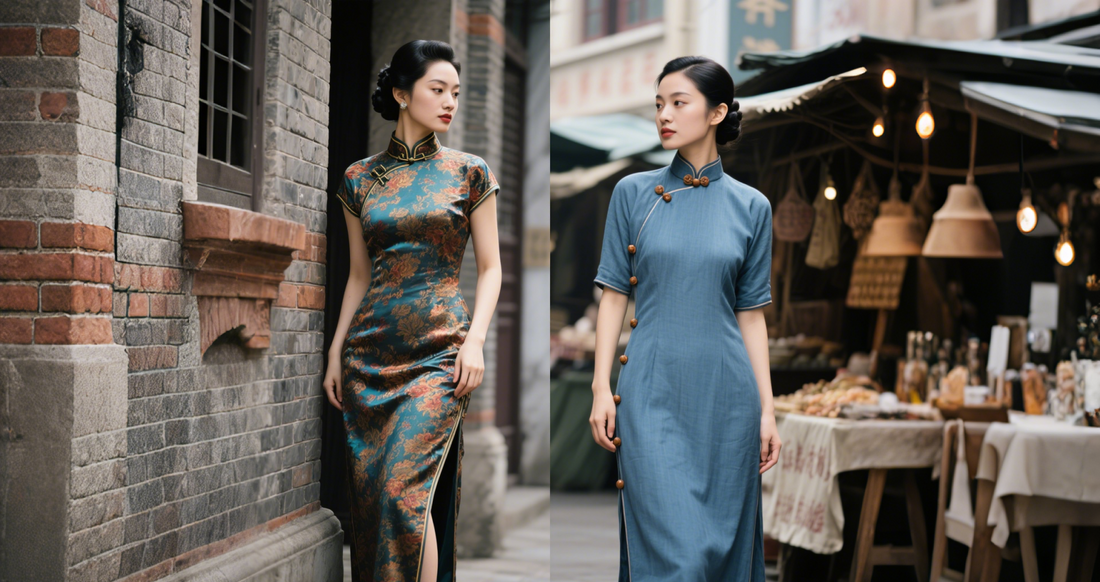Qipao vs Cheongsam: Differences, History & Cultural Significance
The terms qipao and cheongsam are often used interchangeably, but they carry subtle differences in origin, style, and cultural context. This guide explores their distinctions, historical evolution, and modern fashion interpretations.
 Terminology & Origins
Terminology & Origins
| Aspect | Qipao | Cheongsam |
|---|---|---|
| Etymology | Mandarin term meaning "banner gown" (referring to Manchurian origins) | Cantonese term meaning "long shirt/dress" |
| Regional Use | Mainland China | Hong Kong, Macau, overseas Chinese communities |
| Historical Roots | Evolved from Manchurian robes during Qing Dynasty | Originally unisex; later feminized in 1920s Shanghai |
Design & Style Differences

Traditional qipao with high collar and side slits

Cheongsam
- Silhouette: Qipao often has a looser fit (traditional) vs. cheongsam's body-hugging cut (modern).
- Neckline: Both feature mandarin collars, but cheongsam may have lower or decorative variations.
- Fabrics: Qipao uses heavier silks; cheongsam embraces lace, brocade, or even Western materials.
Cultural Significance
Did you know? The cheongsam became a symbol of female empowerment in 1920s Shanghai, rejecting Confucian modesty norms.
While both garments represent Chinese heritage, their cultural narratives differ:
- Qipao: Tied to imperial history and ethnic Manchu identity.
- Cheongsam: Embodies cosmopolitan Shanghai glamour and modernity.
Modern Fashion Adaptations
Today’s designers blend tradition with contemporary trends:
Qipao Revival
Luxury brands reinterpret qipao with embroidery and vintage motifs.
Cheongsam Fusion
Streetwear hybrids pair cheongsam tops with jeans or mini skirts.
